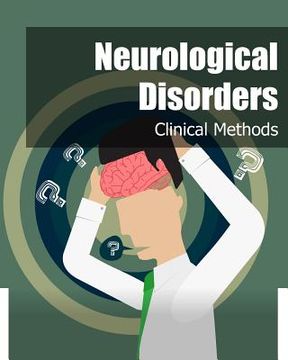Reseña del libro "Neurological Disorders: Clinical Methods (en Inglés)"
A neurological disorder is any disorder of the body's nervous system. Symptoms include, but do not limited to, paralysis, muscle weakness, poor coordination, loss of sensation, seizures, confusion, and altered levels of consciousness. Neurological Disorders - Clinical Methods brings scholars and experts who are working in the areas directly related to neurological disorder in front of you, and presents the latest research findings to you. Chapter 1 reviews Temporal Lobe Epilepsy (TLE). TLE is a well-described type of epilepsy but little is known about the epidemiology. The approach to patients with temporal lobe epilepsy is complex and requires a multidisciplinary team of trained specialists. Large-scale epidemiological studies are needed for improve the understanding of TLE is a therefore necessary. Chapter 2 presents the latest knowledge on the understand of the current sources in epileptic activity in mesial areas. Current sources is a very promising tool to refine radiosurgical and improve classical surgical methods for temporal lobe epilepsy. Chapter 3 highlights the atypical co-occurrence of two genetic disorders, Cornelia de Lange syndrome and Turner syndrome, in the same individual. It focuses on the clinical methods used to explain each clinical feature, with special emphasis on neurological findings. Chapter 4 concerns the use of of probiotics to prevent fungal infection against the decrease of morbidity and mortality in ELBW, especially about long lasting neurological sequelae. Chapter 5 describes an algorithm called Dynamic Autoregressive Neuromagnetic Causal Imaging (DANCI) which uses Granger causality to calculate effective connectivity from magnetoencephalography recordings. It also describes how this technique can be used to understand the fundamental reorganization of neural networks in neurodevelopmental disorders. Chapter 6 provides important and necessary information regarding brain herniation. Brain herniation represents a shift of brain parenchyma across the various anatomical boundaries formed by intracranial bony ridges and dural folds. This chapter emphasises on the need of emergency resuscitation and step-wise management of the patients. Chapter 7 describes spinal shortening as a new option for anterior reconstruction of the thoracic and lumbar spine after posterolateral debridment for spinal infections. Although technically demanding, this technique has a lot of advantages including short operative time, avoid morbidity of bone graft donor site, gives high biomechanical stability and high fusion rate. Chapter 8 highlights the following two aspects: (1) The increase of high alpha relative to low alpha power is a reliable EEG marker of hippocampal atrophy and it is predictive of conversion of patients with Mild Cognitive Impairment (MCI) in Alzherimer's disease (AD); (2) The MCI subjects with higher a3/a2 ratios showed minor atrophy in the impulsive disorders network bilaterally when compared to subjects with lower and middle a3/a2 ratios. It could suggest a functional hyperactivity of the cortico-accumbens-ventral striatum loop in prodromal AD explaining some early cognitive-behavioral symptoms. Chapter 9 provides an overview of the main schools of psychotherapy, the prevalence of psychological disorders, and main cultural issues in psychotherapy. It also describes an Omani study that explored the utilization of psychotherapy within an Arabic/Islamic society, with unique value/and belief systems.

